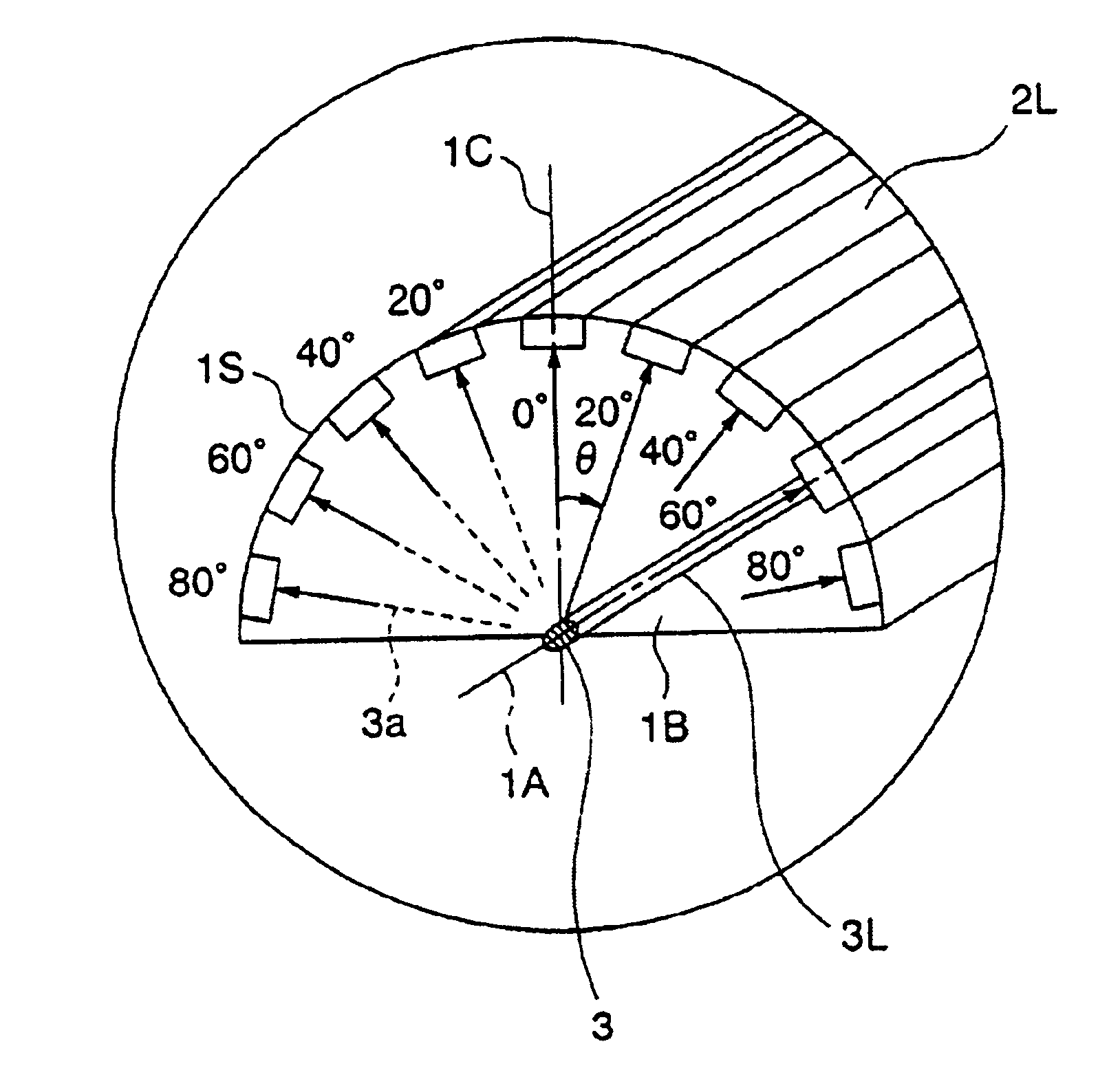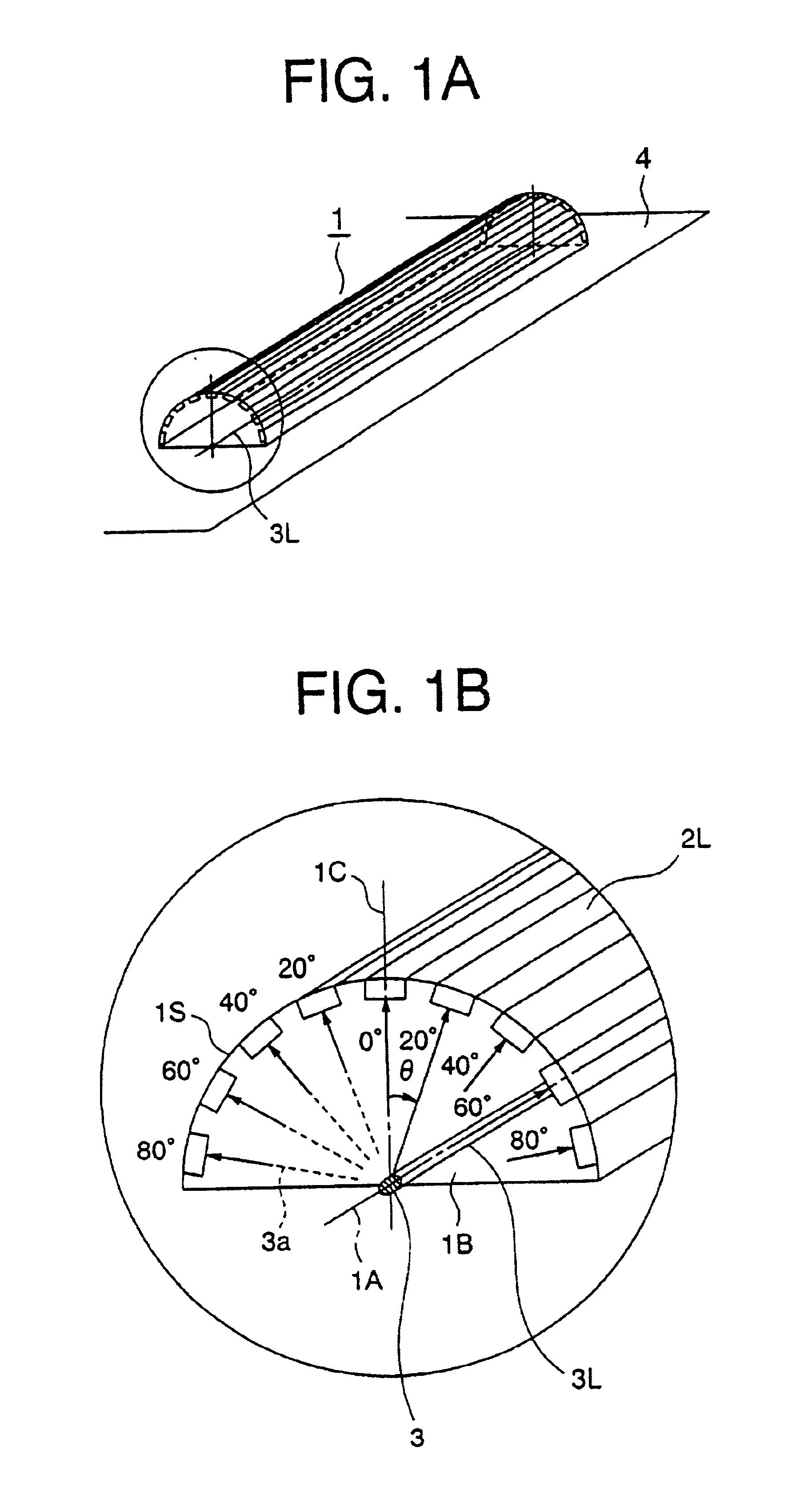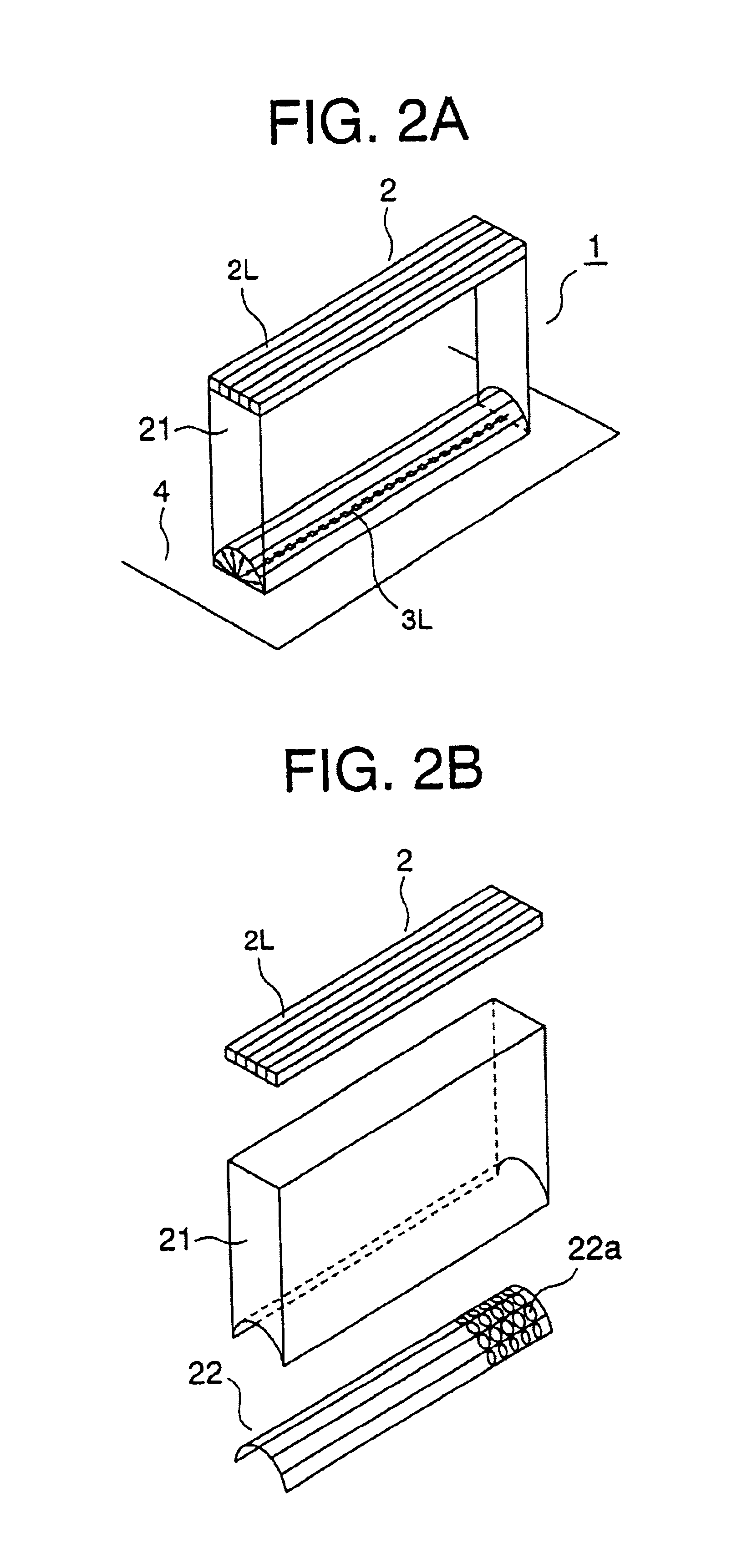Sensor head, luminance distribution measurement apparatus having the sensor head, and unevenness inspection/evaluation apparatus
a technology of luminance distribution and measurement apparatus, which is applied in the direction of optical radiation measurement, identification means, instruments, etc., can solve the problems of conventional sensor head measurement errors, inability to precisely measure this luminance characteristic, etc., and achieve the effect of measuring easily and quickly the luminance distribution of the entire pixels
- Summary
- Abstract
- Description
- Claims
- Application Information
AI Technical Summary
Benefits of technology
Problems solved by technology
Method used
Image
Examples
example 1
[0032]Referring now to FIGS. 1A and 1B, there is shown a sensor head having a multiplicity of linear image sensors according to the invention. Indicated generally by a reference numeral 2L in FIG. 2 are a multiplicity of linear image sensors. The area occupied by the pixels on the LCDs is a few times to 10 times as large as the area occupied by the linear image sensors. Each of the linear image sensors 2L extends in the direction of the axis 1A of imaginary semi-cylindrical surface 1S, and angularly spaced apart on the inner surface of the imaginary semi-cylinder with their light receiving face oriented towards the axis 1A. Thus, the normal of each light receiving face of the linear image sensor 2L passes through the axis 1A of the imaginary semi-cylinder. A sensor head 1 incorporating the linear image sensors 2L shown in FIGS. 1A and 1B has its axis 1A coincided with the line of pixels.
[0033]As shown in FIGS. 1A and 1B, the linear image sensors 2L are angularly disposed on the imag...
example 2
[0036]Referring to FIG. 2A, there is shown another embodiment of a sensor head that utilizes the linear image sensors of FIG. 1. This sensor head 1 includes a linear sensor assembly 2 having a multiplicity of linear image sensors 2L arranged on a common plane, and an optical system 21. In the example shown herein, each of the linear image sensors 2L is arranged in parallel with a given pixel line 3L. The optical system 21 is designed to receive beams of light that propagate from the pixel line 3L at different radial directions (i.e. at different vertical angles or angles of incidence) and for transmitting each beam to a corresponding linear image sensor 2L intended for sensing the light emitted from the pixel line 3L at a particular angle. The optical system 21 consists of such elements as for example a lens, a prism, a mirror, and a set of optical fibers. In the example shown in FIG. 2A, the light receiving faces of the optical system are disposed on the surface of an imaginary sem...
example 3
[0041]FIG. 3A shows an exemplary sensor head which utilizes a CCD area image sensor 2A instead of linear image sensors 2L shown in FIG. 3A. The optical system 21 is adapted to receive light radiated from a line of pixels and / or multiple lines of pixels 3L at different vertical angles and transmits the light to corresponding linear image sensors 2L. The light receiving faces can be distributed on an imaginary semi-cylinder for example. Each of the angular components of the radiated light is related to a corresponding sensing pixel of the area image sensor 2A by means of an optical element of the optical system 21, in the same manner as in the second example.
[0042]When the pixels in the pixel line 3L are activated, they emit beams of light at different vertical directions, which are picked up by the area image sensor 2A through the optical elements associated with the respective directions. In the example shown in FIG. 3A, the area image sensor 2A scans the sensing pixels in the area ...
PUM
 Login to View More
Login to View More Abstract
Description
Claims
Application Information
 Login to View More
Login to View More - R&D
- Intellectual Property
- Life Sciences
- Materials
- Tech Scout
- Unparalleled Data Quality
- Higher Quality Content
- 60% Fewer Hallucinations
Browse by: Latest US Patents, China's latest patents, Technical Efficacy Thesaurus, Application Domain, Technology Topic, Popular Technical Reports.
© 2025 PatSnap. All rights reserved.Legal|Privacy policy|Modern Slavery Act Transparency Statement|Sitemap|About US| Contact US: help@patsnap.com



